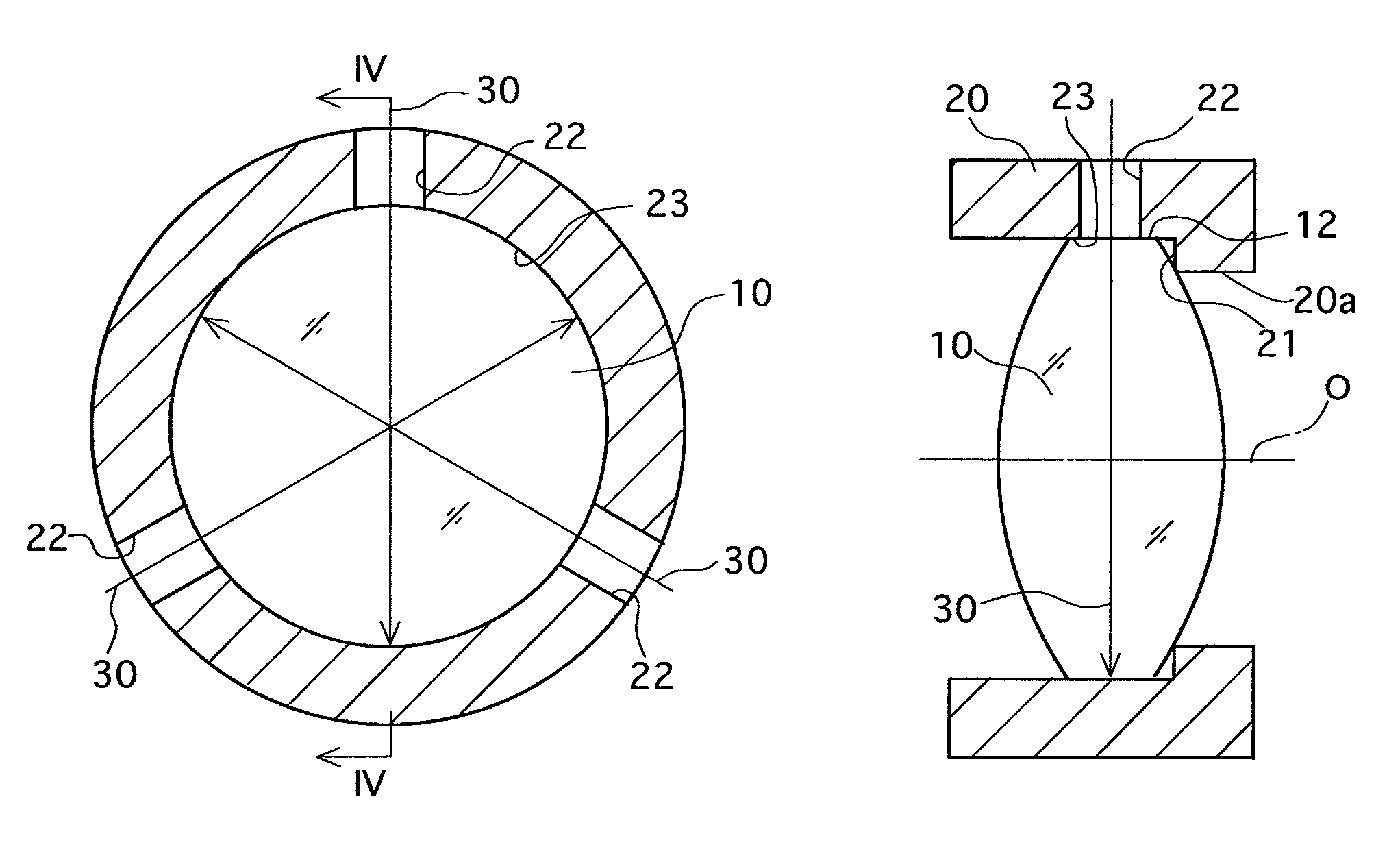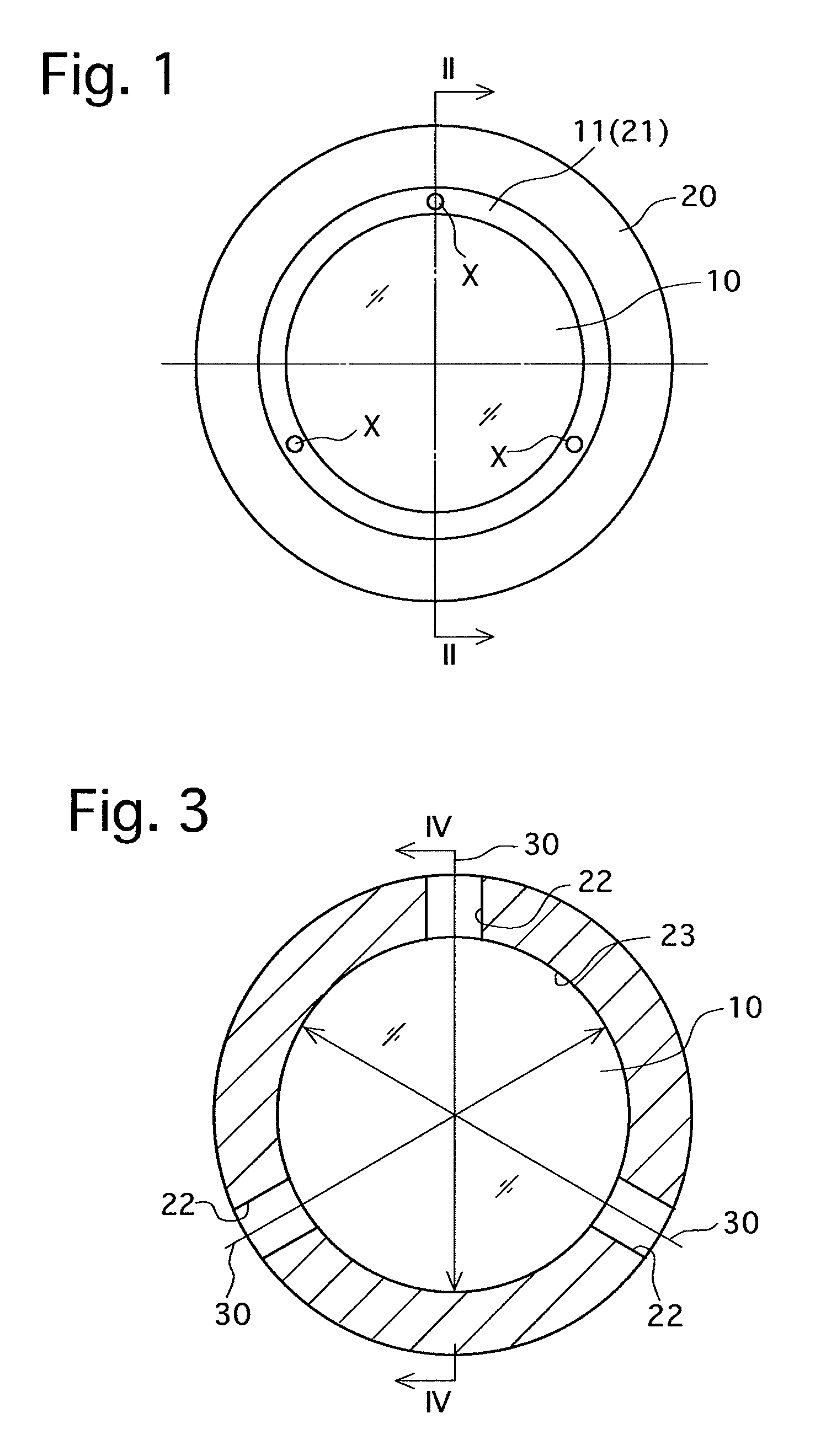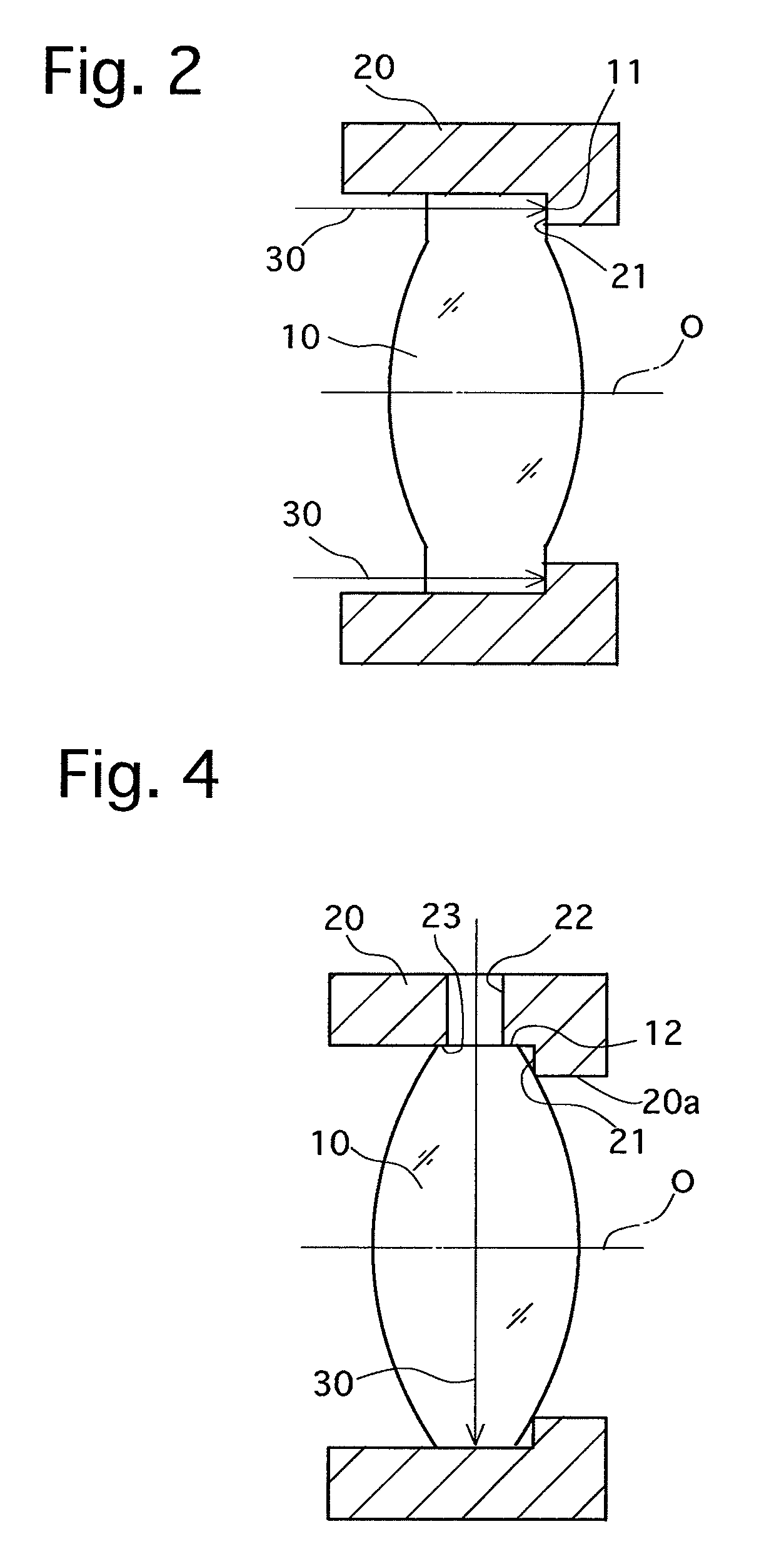Fixing method for resin lens
a technology of resin lens and fixing method, which is applied in the field of resin lens fixing method, can solve the problems of deteriorating the quality of an image captured by the camera, the alignment of the lens with respect to the lens frame, etc., and achieves the effect of high positional precision
- Summary
- Abstract
- Description
- Claims
- Application Information
AI Technical Summary
Benefits of technology
Problems solved by technology
Method used
Image
Examples
first embodiment
[0026]FIGS. 1 and 2 illustrate a fixing method for a resin lens according to the present invention. A resin lens element 10 is made of amorphous polyolefin, and has a rotationally symmetric shape centered on an optical axis O. A resin lens frame 20 is made of amorphous polyolefin with a carbon material incorporated therein, and is dark in color due to the influence of the carbon material. The resin lens frame 20 also has a rotationally symmetric shape centered on the optical axis O. The outer diameter of the resin lens element 10 and the inner diameter of the resin lens frame 20 (the inner diameter positioned in front of an annular abutting surface (restricting portion) 21) are determined so that the resin lens element 10 fits into the resin lens frame 20. The resin lens element 10 is provided, on the peripheral edge portion thereof, with an annular abutting surface 11 which is orthogonal (normal to) the optical axis O of the resin lens element 10. The resin lens frame 20 is provide...
second embodiment
[0031]Note that as shown in FIGS. 3 and 4, in the second embodiment, the laser beam 30 is irradiated in a direction orthogonal to the optical axis O, however, the irradiating direction of the laser beam 30 can be inclined at an angle sharper than 90° without being orthogonal to the optical axis O so long as the laser beam 30 transmits through the irradiation holes 22 and the resin lens element 10 so as to reach the inner circumferential surface (abutting surface) 23 of the resin lens frame 20.
[0032]In the second embodiment, the annular abutting surface (restricting portion) 21 determines the movement extremity of the resin lens element 10 in the optical axis direction thereof (in the right direction in FIG. 4). However, the second embodiment has the advantage of being able to fix the resin lens element 10 to the resin lens frame 20 even if the resin lens element 10 does not abut against the annular abutting surface 21 so long as the irradiation holes 22 and the outer peripheral edge...
PUM
 Login to View More
Login to View More Abstract
Description
Claims
Application Information
 Login to View More
Login to View More - R&D
- Intellectual Property
- Life Sciences
- Materials
- Tech Scout
- Unparalleled Data Quality
- Higher Quality Content
- 60% Fewer Hallucinations
Browse by: Latest US Patents, China's latest patents, Technical Efficacy Thesaurus, Application Domain, Technology Topic, Popular Technical Reports.
© 2025 PatSnap. All rights reserved.Legal|Privacy policy|Modern Slavery Act Transparency Statement|Sitemap|About US| Contact US: help@patsnap.com



